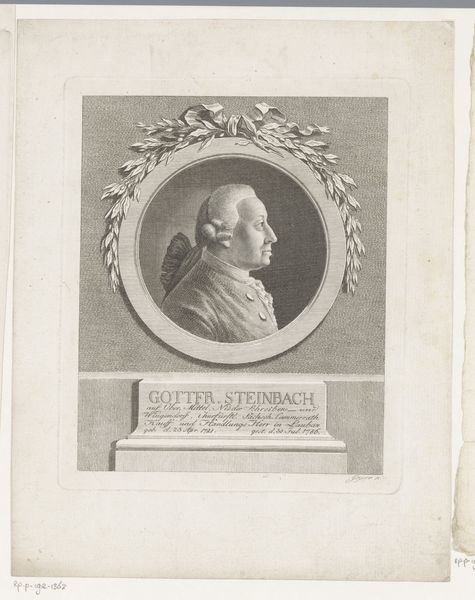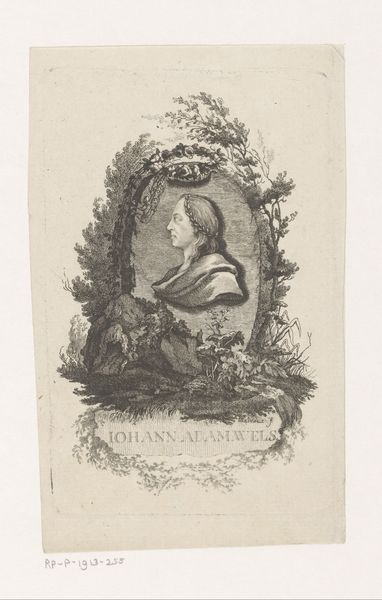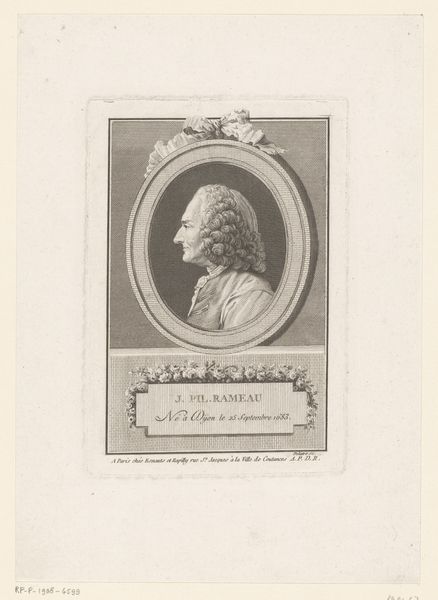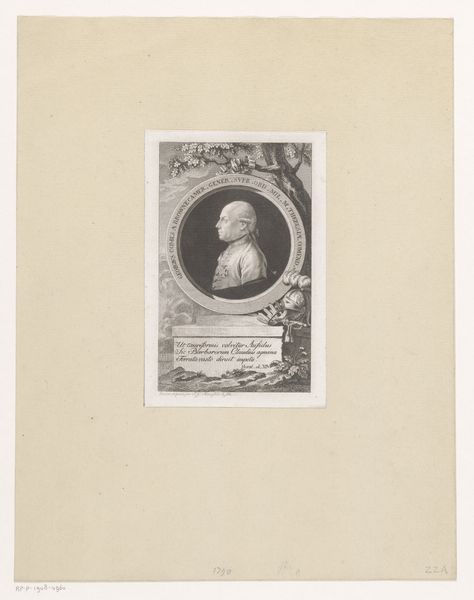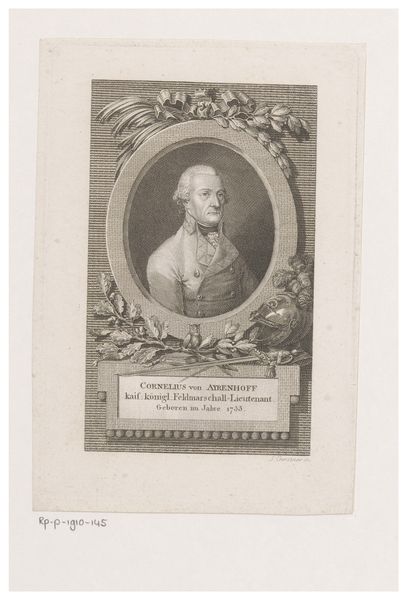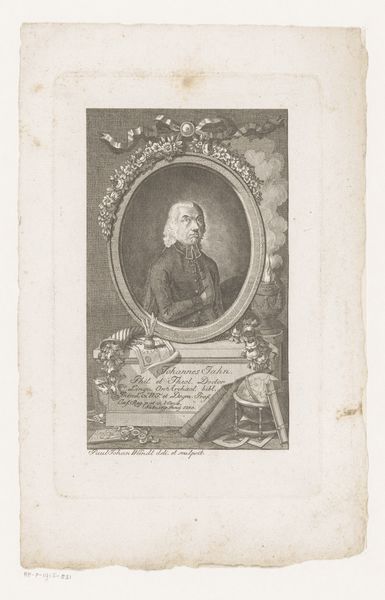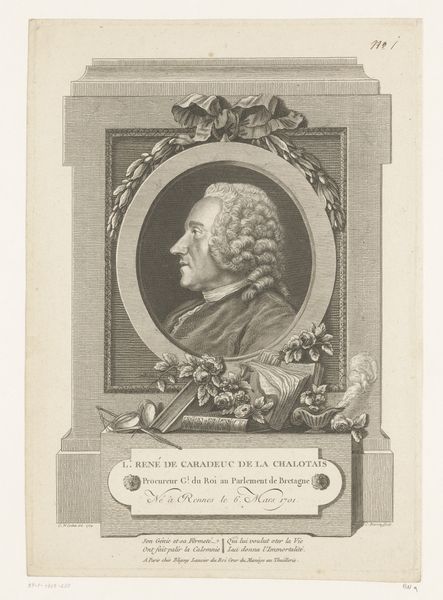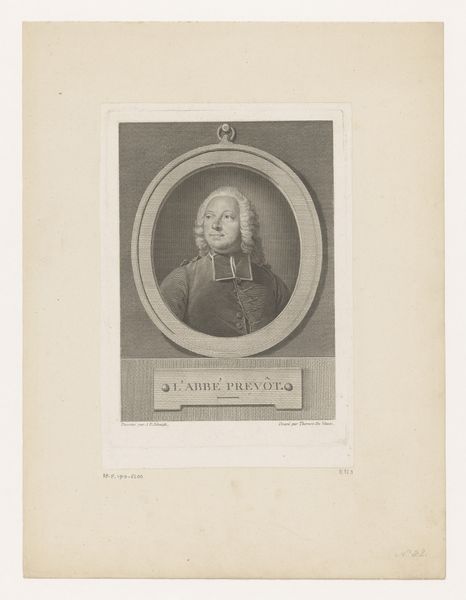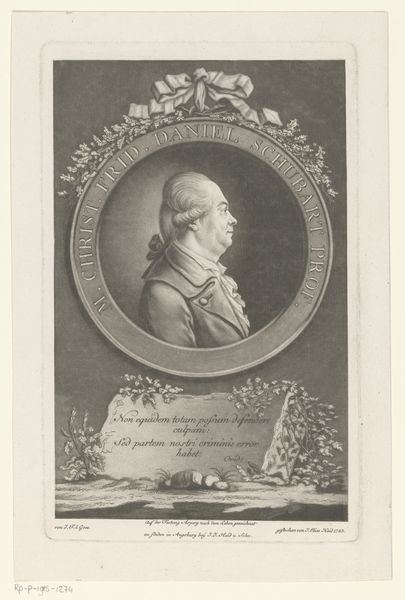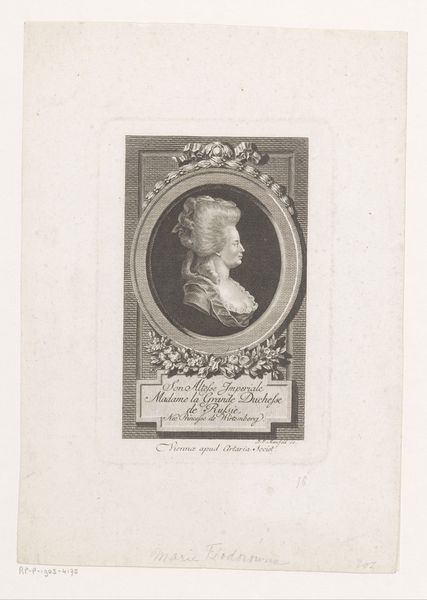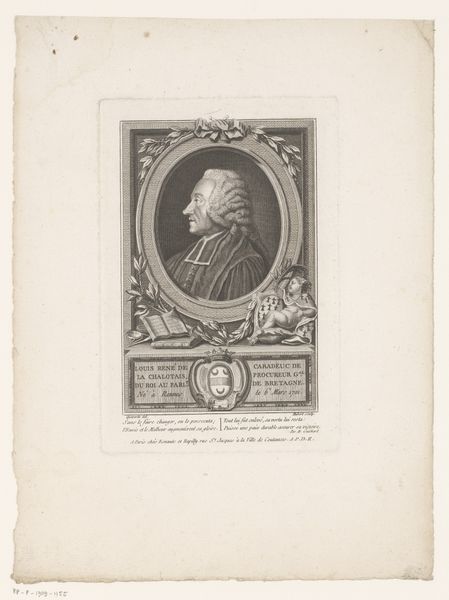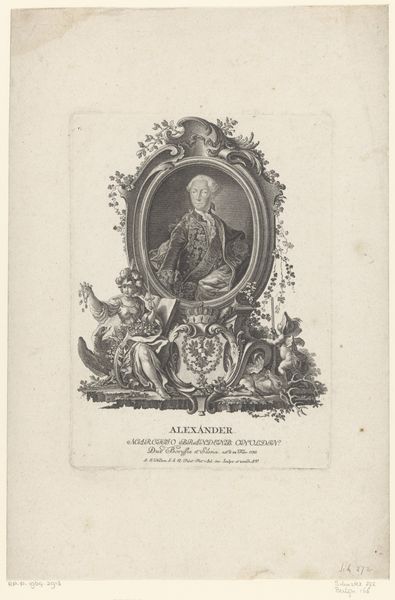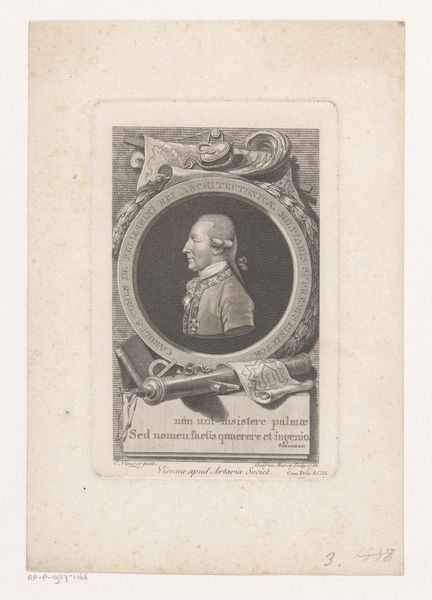
Dimensions: height 198 mm, width 145 mm
Copyright: Rijks Museum: Open Domain
Editor: This is a very detailed engraving from somewhere between 1749 and 1796, entitled "Portret van Anton von Störck" by Johann Ernst Mansfeld. I’m struck by how formally the portrait is presented, almost like a medal or coat of arms. What stands out to you in this work? Curator: Formally, the most compelling aspect is the contrasting textures created within the rigid structure. The patterned background, the smoothness of the oval frame, and the softness implied by the subject’s clothing, hair, and skin—all existing within a carefully defined rectangle— establish a tension. Editor: So the contrast is more significant than the content for you? Curator: The content, the representation of Anton von Störck, becomes secondary to the meticulous balance and articulation of visual elements. Note also how the elaborate botanical elements at the bottom draw the eye. Do you find they are just decorative? Editor: I suppose I hadn't really thought of them in relation to the portrait itself, only as elements filling up the space, creating an anchor. But I see your point - are the floral flourishes placed to comment on his personality? Curator: Possibly. Or perhaps to balance the visual weight of the head within the oval. But more importantly, note the contrasting dark and light patterns and how they relate to each other - they create a semiotic landscape that structures our reading of the image. Without those careful visual calculations, there would just be an oval with a man in it, in the center of the page. Editor: I’ve never considered the importance of textures and forms on a deeper level. I now have a much better appreciation for the structured semiotics behind portraiture of this time. Curator: Precisely! It's through understanding that balance, shape, and texture that we engage in more complete interpretation of artworks.
Comments
No comments
Be the first to comment and join the conversation on the ultimate creative platform.
